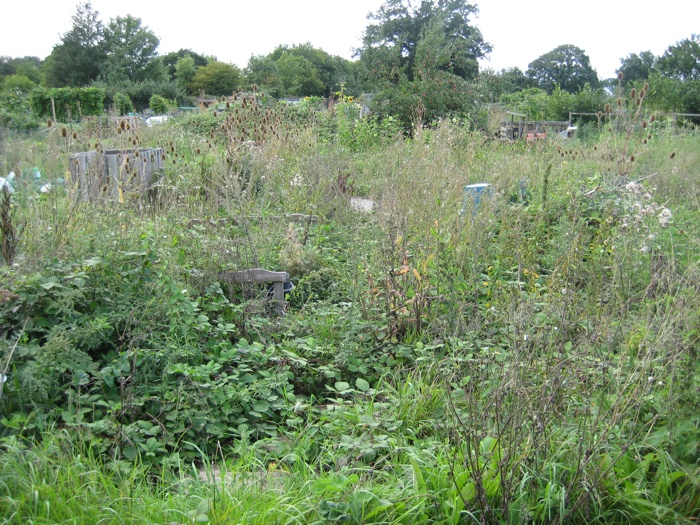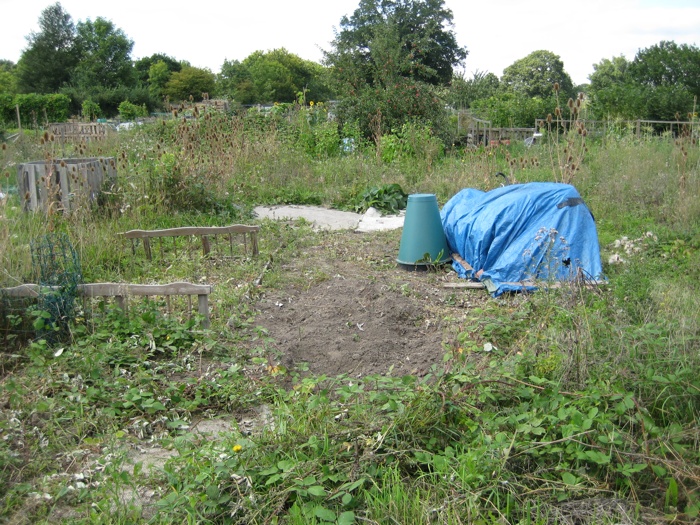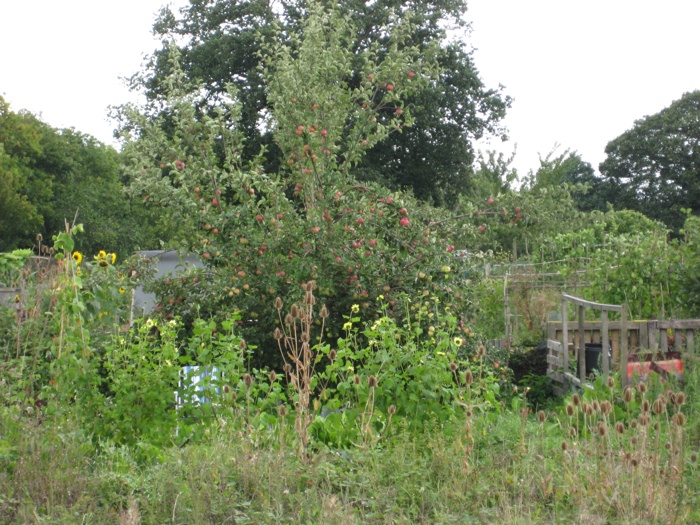Plot 326 tenancy started on 24th August 2010. The key to the plot arrived in the mail on 27th August and the first visit to the new Plot took place on the 28th August, subsequent visits to the Plot have taken place since then and will continue on a regular basis. The whole Allotment site is extensive and the waiting list for this particular site at Bulmershe is long and now at the numerical figure of 88. When Ella Montt signed up to the waiting list in November 2010 the waiting list was half the number as it currently stands, this would suggest that there is a fairly active turnover of Plot holders, but it may also suggest that individual flux is a reality in society as a whole and that static living is not a common factor for many.

Gaining tenancy was and still is an exciting moment for Ella Montt who now became an Allotment Holder. The experimental Plot at MERL will now have a research area not just in the historic garden at MERL, but Ella Montt would also become part of or linked in to Allotment History on a town site that has been in existence for many years, a space that has much history of its own. Ella Montt will share the people’s rights to growing space for food. Allotments in the United Kingdom were originally set up for the working classes, poor or unemployed people when they were denied access to land through the Inclosure Acts. The parliamentary Acts were a gradual process from medieval times but the passing of these Acts accelerated around the 18th to 19th Century. The rich often appropriated Common Land that was once open to all and the people were denied access to growing space or to forage for fuel wood and food. A mass exodus from the rural areas at this time, because of lack of work and means of support coincided with industrial revolution, towns and cities began to grow rapidly, and space was needed as part of both the rural village and urban areas for the workers or unemployed to grow food for subsistence.

Various Allotment Acts were passed over many years to allow the right to land with in a given area. Much like strip farming of medieval days this land was divided up and rented to the Growers. During the 1914-18 War, because food was needed, the demographic of allotment holder grower changed to be not just the poor, but also anyone who was able to implement this action. In WW2 1939-45 Allotment land was converted from any land, garden, or park space that could be made available. The need for food is universal, so this was a parallel affect in other countries affected by war at this time.
The popularity of access to Allotment space comes and goes. For some individuals they have asserted their right to this growing space for many years. In recent years awareness that being able to grow ones own food can be beneficial in many ways. It is an enjoyable way to maintain health through outdoor activity, food can be grown without the use of pesticides or genetic modification, biodiversity and wildlife can be encouraged through companion planting, one can grow food without contributing to air miles, the food tastes better than anything bought from a supermarket, the food is fresher, one will know how it is grown, it can be an act that deflates the power of the supermarket through autonomy, but does not support individuals who are in business as Growers. An Allotment site is a social space, in order to maintain an individual Plot and achieve vegetable self-sufficiency it takes planning and labour.

The first visit to Plot 326 was the start of a new adventure. On entering the big iron gates a series of social interactions was initiated, including welcoming deposits of runner beans and over sized courgettes from various other Allotment Holders. Ella Montt’s Plot was at the furthest end of the field site. A timely reminder was noted that panniers would be needed on the bike for transporting various items both to and from the Plot. With assistance from a map of the Allotment space and another Allotment Holder the Plot‘s position was defined. A survey of the new Plot discovered that it was cultivated in a small percentage area by the previous tenant, but the majority of the Plot space was covered in weed plants with bountiful seed heads and brambles.
An Apple Tree is at one end of the Plot. The tree is over grown and in need of pruning with some of its boughs trailing onto the floor. When the tree was flowering in Spring it must have been covered in blossom, because now it is covered in Apples, which unfortunately, because of it being over grown and over capacity, means a lot of the Apples are being wasted on the ground. Some of the fruits have since been gathered but as yet it is too early for them to be ripe and because they are eating apples they are not fluffy when they are cooked, but they are usable for cooking. It was reported from the Allotment Holder at 328A that last year there was only one Apple on the tree and in October it was very tasty.

Working on the Allotment Plot has revealed the soil seems good, but the Plot is known to flood in the winter. Gradually the Plot will be dug over, a choice was made not to rotovate it, because although rotovation would break up the soil quickly it would turn the seed heads and brambles under the soil, which will create even more work at a later date. The next few weeks will see more space clearing when time allows in preparation for over wintering vegetables and fruit planting.
